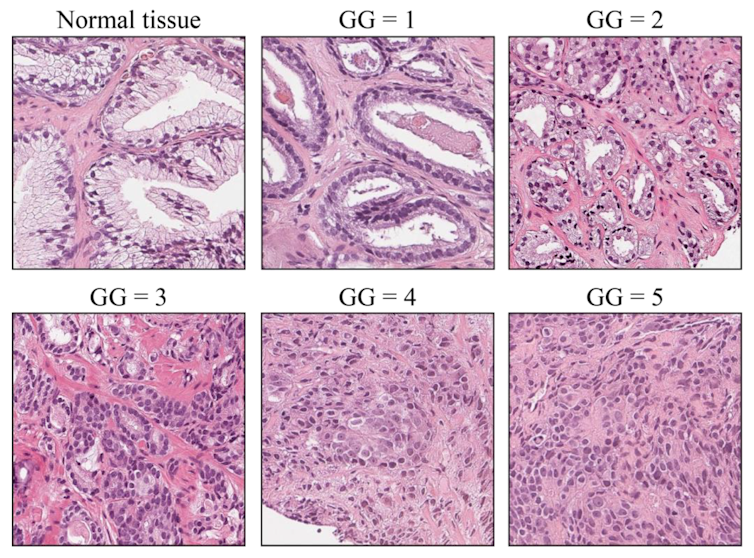Former President Joe Biden has been diagnosed with an “aggressive” form of prostate cancer that has spread to his bones. But what does it mean for this type of cancer to be called aggressive?
As a urologic surgeon who specializes in diagnosing and treating prostate cancer, I often explain to my patients that aggressiveness isn’t based on a single factor. Instead, it comes from understanding how abnormal the cancer cells look, known as the tumor’s grade; how far they’ve spread, known as the tumor’s stage; and their genetic fingerprint.
Grade: Decoding cancer cell appearance
One key piece of the puzzle is the cancer’s grade, which indicates the tumor’s potential to grow. After a prostate biopsy, a doctor specializing in examining tissues – a pathologist – grades the tumor by comparing the appearance of its cancer cells with that of normal prostate cells.
Imagine healthy prostate cells as organized workers in a factory, each performing specific tasks. In contrast, high-grade cancer cells appear chaotic, growing and dividing rapidly.

As prostate cancer grade increases, individual glands becomes less well formed and the cells more disordered.
Salvi et al/Cancers, CC BY-SA
For prostate cancer, doctors use what are called grade groups that range from 1 (least aggressive) to 5 (most aggressive). These groups are a simplification based on an older classification called a Gleason score. Biden’s Gleason 9 cancer falls into grade group 5, indicating the cells appear extremely abnormal with a strong potential for rapid growth and spread.
While the cancer’s grade helps indicate how tumor cells might behave, it doesn’t tell the whole story. Some high-grade cancers can remain confined to the prostate for months or even years.
To understand where the cancer is and how far it has advanced, doctors determine its stage.
Stage: Mapping cancer location and spread
A tumor’s stage describes if, and how far, cancer has spread beyond where it first formed. Doctors use physical exams, imaging scans and lab tests to stage prostate cancer.
Medical professionals usually use a detailed system called TNM – short for tumor, nodes, metastasis – to classify a tumor’s stage. But prostate cancer stage can be broadly understood as:
Localized (stages 1-2): The cancer is only within the prostate. Think of a weed confined to a small garden bed. Many localized cancers, particularly if low-grade, may not be deemed aggressive and can often be safely monitored.
Locally advanced (Stage 3): The cancer has spread out from the prostate and is growing in very nearby tissues, like a weed sending roots into the surrounding lawn.
Metastatic (Stage 4): The cancer has spread to distant parts of the body. For prostate cancer, this often means lymph nodes, bones – as in Biden’s case – liver or lungs. This is like the weeds spreading seeds down the street and across town.
A Stage 4 prostate cancer is…



